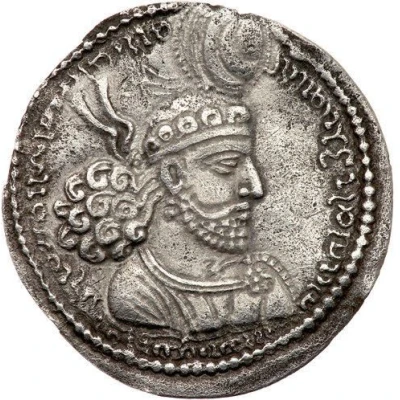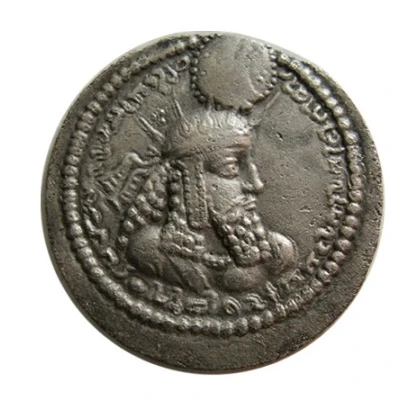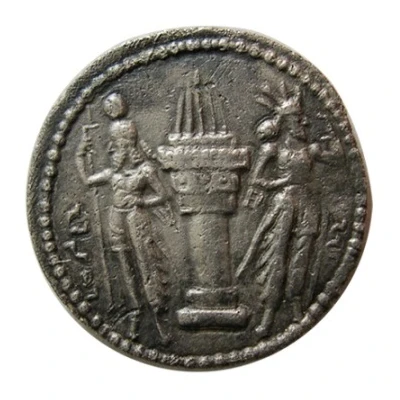


© The New York Sale
Hemidrachm - Hormizd I
| Silver | 1.76 g | - |
| Issuer | Sasanian Empire (Sasanian Empire (224-651)) |
|---|---|
| Emperor | Hormazd I (270-271) |
| Type | Standard circulation coin |
| Years | 272-273 |
| Value | Hemidrachm (1⁄24) |
| Currency | Dinar (224 AD-651 AD) |
| Composition | Silver |
| Weight | 1.76 g |
| Shape | Round (irregular) |
| Technique | Hammered |
| Demonetized | Yes |
| Updated | 2024-10-10 |
| Numista | N#411367 |
|---|---|
| Rarity index | 100% |
Reverse
Fire altar without ribbon, flanked by two attendants facing outward, the left, wearing raidant crown with korymbos, the right with mural crown; symbol on altar shaft
Edge
Plain
Comment
This reverse type is most similar to the early reverse types of Varhran I, so this is probably a very late issue in the reign of Hormizd.
Interesting fact
One interesting fact about the Hemidrachm - Hormizd I (272-273) coin from the Sasanian Empire is that it features a unique blend of Persian and Roman influences in its design. The coin's obverse side bears the image of King Hormizd I, while the reverse side features a stylized representation of the Persian goddess Anahita, who was revered as a symbol of fertility and prosperity. This fusion of Persian and Roman elements reflects the cultural exchange and influence that occurred during the Sasanian Empire's period of rule.



